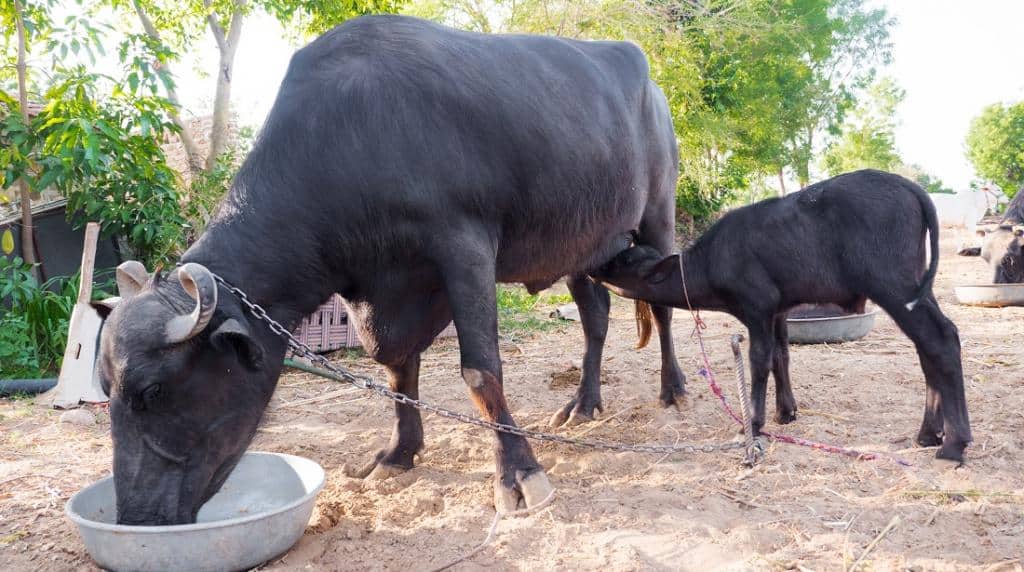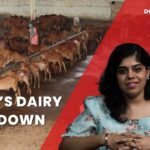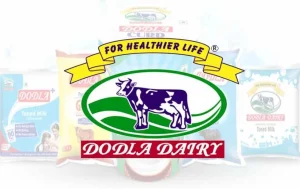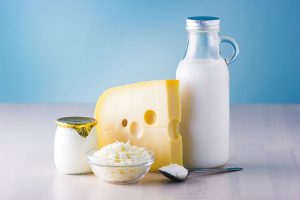
Indian dairy farmers now prefer exotic or crossbred cows to indigenous cattle, buffaloes; a crossbred cow has a high milk yield compared to a buffalo or native cattle.
India’s dairy sector is already under strain for the past few years
Any milk loss because of missing artificial insemination would have dealt a severe blow to the country’s milk production already under strain because of the triple crisis of lumpy skin disease (LSD), disrupted milk demand during COVID-19 lockdowns, and a spiralling fodder inflation.
 The viral pox disease LSD is novel to the country and was first reported in Odisha in 2019. Since then, it has spread to almost all the states and has caused widespread mortality.
The viral pox disease LSD is novel to the country and was first reported in Odisha in 2019. Since then, it has spread to almost all the states and has caused widespread mortality.
According to answers given to Parliament questions, more than 3.2 million cattle and buffaloes have contracted LSD between July 2022 and 2023; and 0.2 million succumbed to it.
Milk production of the surviving animals has dropped by 20 to 50 per cent, which varies depending on the breed.
Subhash Kailash, a farmer from Haryana’s Karnal district, is reeling under the losses caused by the disease even months later.
LSD afflicted all of his 52 cows and killed 12 of them. His daily milk supply has come down to 300-400 litres from earlier 700 litres.
LSD is still prevalent in the country, with a little over 6,500 active cases as on July 25, 2023.
During COVID-19-lockdowns, many farmers responded to the crisis of disrupted milk demand by reducing the size of their herds and not purchasing more animals.
Anecdotal evidence shows that such exodus of dairy farmers has affected the country’s milk production, even in the flush season of October to March, when animals naturally produce more milk because of favourable weather.
Those who continued to practice dairy farming despite the slump, faced an acute shortage of dry fodder (wheat straw, along with other items) in 2022, and have been facing a steady fodder inflation since then. The shortage was fuelled by fall in wheat stocks due to an unusually hot March 2022.
Anil Goyla, a dairy farmer from Delhi, explains the impact of fodder price rise in simple terms: A buffalo and a cow eats 12 kg and 10 kg of fodder, respectively, per day. Fodder rates are so high—a quintal costs Rs 950—that farmers have no option but to underfeed their cows and calves. Such practice affects not only milk quantity but also its fat content.
Dairy farmers and researchers DTE spoke to, however, say that the reducing fat content in milk in not a recent phenomenon, and could be the result of a change in India’s preference in dairy animals over the past decade.
The Fat Problem
Dairy farmers are now opting for crossbred cows over buffaloes, whose milk has higher fat content
Of the total milk fat generated from milk procurement, 60 per cent goes for liquid milk, and the rest is used for products like butter.
Usually, a buffalo’s milk has more fat content—it has 7-10 per cent fat content, as against 4-6 per cent in cow milk, says Sohan Lal from Urmul Setu Sansthan, a non-profit that works with cattle rearers in western Rajasthan.
But a crossbred cow has a high milk yield compared to a buffalo—average milk yield of an exotic/crossbred cow is 8.52 kg per day in 2021-22, according to the Basic Animal Husbandry Statistics 2022.
The maximum yield reported was 13.88 kg per day in Punjab, whereas a buffalo’s average yield was 5.96 kg a day. Therefore demand has been increasing for crossbred cows in recent years.
 That is the reason dairy farmers are going for more crossbred cows. Between 2012 and 2019 (the last two livestock census), while the population of exotic and crossbreed cows grew by 41 per cent, the population of female buffalo increased by merely 8.6 per cent, indigenous cows’ population grew by 10 per cent.
That is the reason dairy farmers are going for more crossbred cows. Between 2012 and 2019 (the last two livestock census), while the population of exotic and crossbreed cows grew by 41 per cent, the population of female buffalo increased by merely 8.6 per cent, indigenous cows’ population grew by 10 per cent.
While the absolute number of indigenous female cattle is 98,165, compared to 47,746 exotic/crossbreed ones, the growth rate of the latter shows that dairy farmers are preferring more crossbred cows over indigenous or buffaloes. The total number of female buffaloes is 100,569.
Buffaloes also cost more than cows. “Average rate of a good breed buffalo is somewhere between Rs 1.5 lakh and Rs 3 lakh. And if a farmer suffers a loss in their dairy business, it is difficult to cope up considering the high price. Only well-to-do farmers can afford,” says Chitranayak Sinha, senior scientist, National Dairy Research Institute.
Kailash adds that buffaloes have become more unproductive compared to cows. Imagine that a cow and buffalo give birth on the same day.
After three months, the buffalo’s milk production will decline by 20-25 per cent while a cow will continue to give same quantity of milk for the next six to seven months.
If artificial insemination is done on both for the first time, and both fail to conceive, the buffalo will give milk only once even though its cost of feeding remains the same.
“But the cow’s milk production will not decrease. So, I will have to sell the buffalo to escape the loss,” Kailash explains.


















